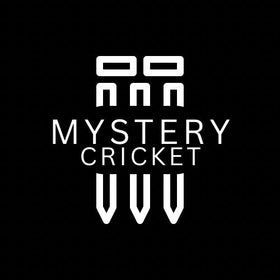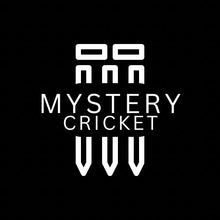IPL Mascots and Marketing Gimmicks That Clicked

The Indian Premier League (IPL) is far more than a cricket competition; it's a multi-billion-dollar entertainment franchise and one of the most-watched sports events globally. From nail-biting finishes to pyrotechnic-laden match openings, the IPL thrives not just on the field, but also off it. Each team in the league has carved a unique identity through clever branding, inventive marketing, and, yes, unforgettable mascots.
In this article, we'll explore how IPL teams have harnessed creative marketing tools to win over fans—looking at quirky mascots, catchy slogans, and digital campaigns that clicked. Whether it’s a lion with a moustache or a hashtag that turned into a rallying cry, these tactics have helped make the IPL a pop-culture phenomenon.
1. Moochu Singh – Rajasthan Royals' Royal Roaring Mascot
Rajasthan Royals' mascot, Moochu Singh, is a lion like no other. With a magnificent mane and a distinctive curled moustache, he captures the regal essence of the franchise and the cultural pride of Rajasthan. His name and appearance draw inspiration from the region’s royal heritage and the moustache, in particular, has become his signature.
Moochu Singh is more than just a visual gimmick. He features prominently in match-day entertainment, social media content, and community outreach programmes. He was particularly iconic during the Royals' "Halla Bol" campaign, dancing and rallying fans in stadiums across India. Through Moochu Singh, Rajasthan Royals have found a mascot who doesn’t just represent the team but embodies the spirit of their supporters.
2. Hoog-Lee and Kay the Knight – KKR’s Evolution of Entertainment
Kolkata Knight Riders (KKR) were among the first IPL teams to use mascots as serious marketing tools. Initially, they introduced Hoog-Lee, a playful Bengal tiger cub named after the Hooghly River. With his animated personality and child-friendly look, Hoog-Lee connected deeply with younger audiences.
As the team matured, KKR introduced a second mascot, Kay the Knight—a more serious and stylised warrior character. Kay the Knight aligned with KKR's rebranding efforts to create a stronger, more heroic team identity. Together, the mascots serve dual purposes: Hoog-Lee for light-hearted engagement and Kay the Knight for representing grit and determination.
This dual-mascot strategy reflects KKR's ability to shift gears between entertainment and competitiveness, mirroring their rollercoaster journey in the IPL.
3. The Red Ball Mascot – Delhi Daredevils’ Early Identity Booster
Before their transformation into the Delhi Capitals, the Delhi Daredevils experimented with a bright red cricket ball mascot. While not based on any creature or character, the red ball was vibrant, high-energy, and full of movement—just like the team during its early years.
It served as a visual identity enhancer and became a familiar sight at Feroz Shah Kotla stadium. Though eventually phased out, the red ball played an important role in shaping Delhi’s early brand as a no-nonsense, action-first team.
4. Whistle Podu – The Campaign That Became a War Cry
Chennai Super Kings (CSK) revolutionised IPL fan engagement with the now-iconic "Whistle Podu" campaign. Originally launched as a team anthem, the phrase translates to "blow the whistle" in Tamil and was intended to energise the local fanbase. But it became so much more.
Fans took it to heart. Soon, CSK games were filled with whistles, yellow shirts, and choreographed flash mobs. The campaign extended into merchandise, fan clubs, and social media, becoming one of the most effective fan-involved campaigns in sports marketing.
It worked because it was authentic, localised, and celebratory. CSK didn’t just create a brand; they allowed their fans to be part of it.
5. #KorboLorboJeetbo – KKR’s Battle Cry and Brand DNA
While mascots are great for visual branding, slogans are invaluable for voice and identity. KKR’s "Korbo Lorbo Jeetbo" (“We will perform, fight and win”) has become as iconic as their purple kit.
More than a tagline, it's been a guiding principle across all campaigns—from TV ads to anthem songs, fan merchandise to digital content. The slogan resonates with Kolkata’s cultural vibrance and fighting spirit, helping to forge deep connections with their fanbase.
Its repetition has helped embed it in the minds of cricket lovers. Today, you’d struggle to find a KKR fan who doesn’t chant it during a match.
6. Fan Challenges and Hashtag Campaigns
The IPL’s social media footprint is massive, and teams know how to use it. From dance challenges to meme contests, fan participation is built into campaign design.
Examples include:
-
#VIVOIPL: A general league-wide tag that trended globally
-
#PlayBold by Royal Challengers Bangalore
-
#HallaBolMoments by Rajasthan Royals
These campaigns give fans a voice and a role in the team’s journey. The best part? They also serve as free, high-engagement marketing.
7. Micro-Influencer Collaborations – Authentic Buzz on a Budget
In the age of authenticity, IPL teams have shifted focus from big celebrities to local influencers. Collaborations with Bollywood celebrities, regional food bloggers, lifestyle vloggers, and YouTubers helped generate grassroots buzz.
Micro-influencers offered:
-
Credibility among niche audiences
-
High engagement rates
-
Cost-effective promotion
For example, Mumbai Indians partnered with city-based travel and food creators during home games, creating relatable content that travelled far beyond traditional ads.
8. Gamification and Fantasy Campaigns
With the rise of fantasy sports, IPL teams and partner brands have integrated gamification into their campaigns. Swiggy launched its "Cricket Cards" campaign, while Zomato had a "Premier League" prediction game.
These offered fans:
-
Points and prizes for accurate predictions
-
Daily engagement through apps and websites
-
A sense of competition and community
The interactive nature created daily excitement, making fans check in even when their team wasn’t playing.
9. Jersey Reveals and Anthem Drops – Event-Style Launches
Gone are the days of simply releasing a press photo of a new jersey. IPL teams now turn such moments into full-blown events.
Strategies include:
-
Teaser videos on social media
-
Flash mobs at malls and public places
-
Behind-the-scenes footage with players
Anthem songs, often performed by regional musicians, are launched with similar fanfare. These rollouts create anticipation and drive conversation, especially when combined with giveaways or limited-edition merchandise.
10. IPL as a Cultural Festival – Beyond Cricket
From Holi-themed promos to Diwali fireworks in stadiums, IPL teams consistently blend cricket with India’s cultural calendar. It makes each match more than just a game; it becomes a celebration.
Stadiums feature:
-
Colour runs
-
Food festivals
-
Fan zones with brand giveaways
It’s this carnival-like environment that attracts not only hardcore fans but also families and first-time matchgoers.
Comprehensive Table: IPL Mascots & Marketing Hits
| Category | Example | Why It Worked |
|---|---|---|
| Mascot | Moochu Singh (RR) | Embodied regional pride; fan favourite during matches |
| Dual Mascot Strategy | Hoog-Lee & Kay the Knight (KKR) | Targeted both kids and adults with contrasting mascots |
| Visual Branding | Red Ball Mascot (DD) | Simple, memorable, energetic |
| Slogan/Chant | Whistle Podu (CSK) | Local language, fan-owned campaign |
| Team Mantra | #KorboLorboJeetbo (KKR) | Powerful repetition and emotional identity |
| Digital Fan Engagement | Hashtag Challenges | Viral participation, global reach |
| Influencer Marketing | Local Blogger Tie-ups (MI, RCB) | Niche credibility, cost-effective buzz |
| Gamification | Swiggy Cricket Cards, Zomato League | Daily fan engagement, cross-platform excitement |
| Jersey/Anthem Launch Strategy | Surprise Drops & Teasers | Hype, media coverage, viral potential |
| Festival Integration | Holi/Diwali Stadium Themes | Broader cultural relevance; festive feel |
Conclusion: The IPL’s Masterclass in Marketing
The IPL’s magic isn’t just in the sixes, wickets, or super overs—it’s also in how well it understands branding, storytelling, and fan emotion. From moustachioed lions to three-word mantras and gamified predictions, IPL teams have created marketing campaigns that stick.
In a cricket league filled with entertainment, strategy, and style, these marketing masterstrokes show us one simple truth: the IPL doesn’t just sell cricket; it sells culture, identity, and joy.
It’s a lesson for marketers everywhere—that the real game is often won off the pitch.





Leave a comment